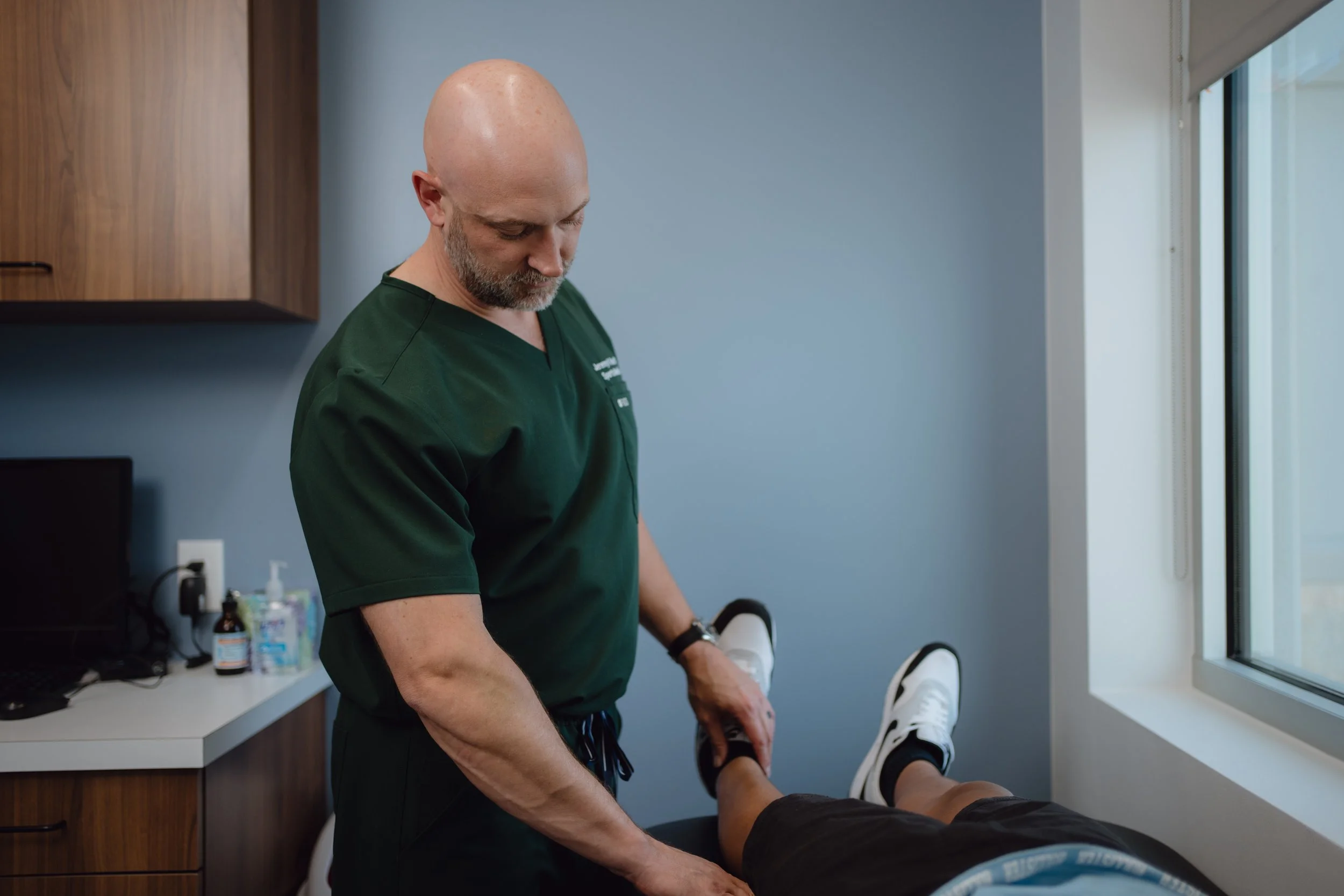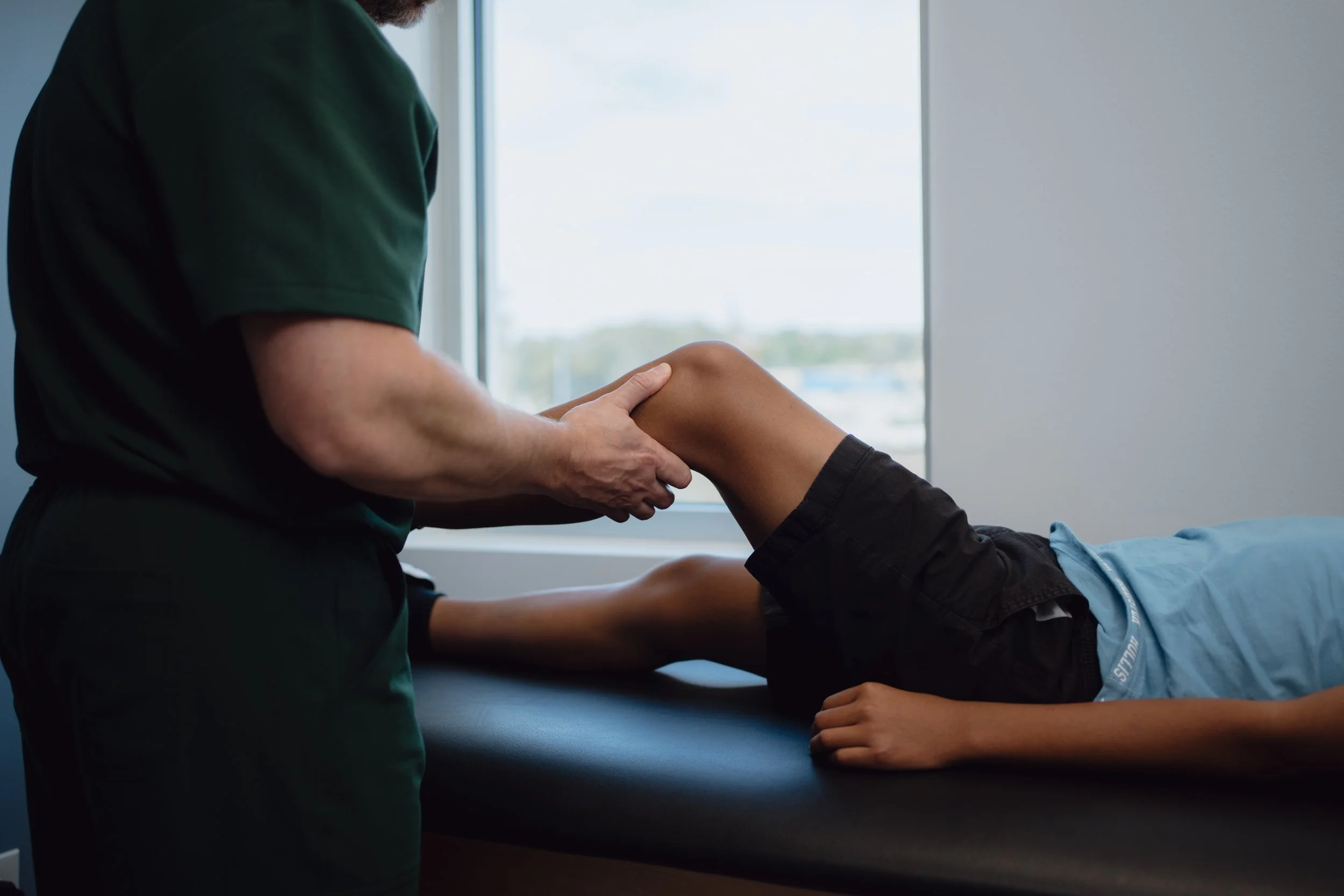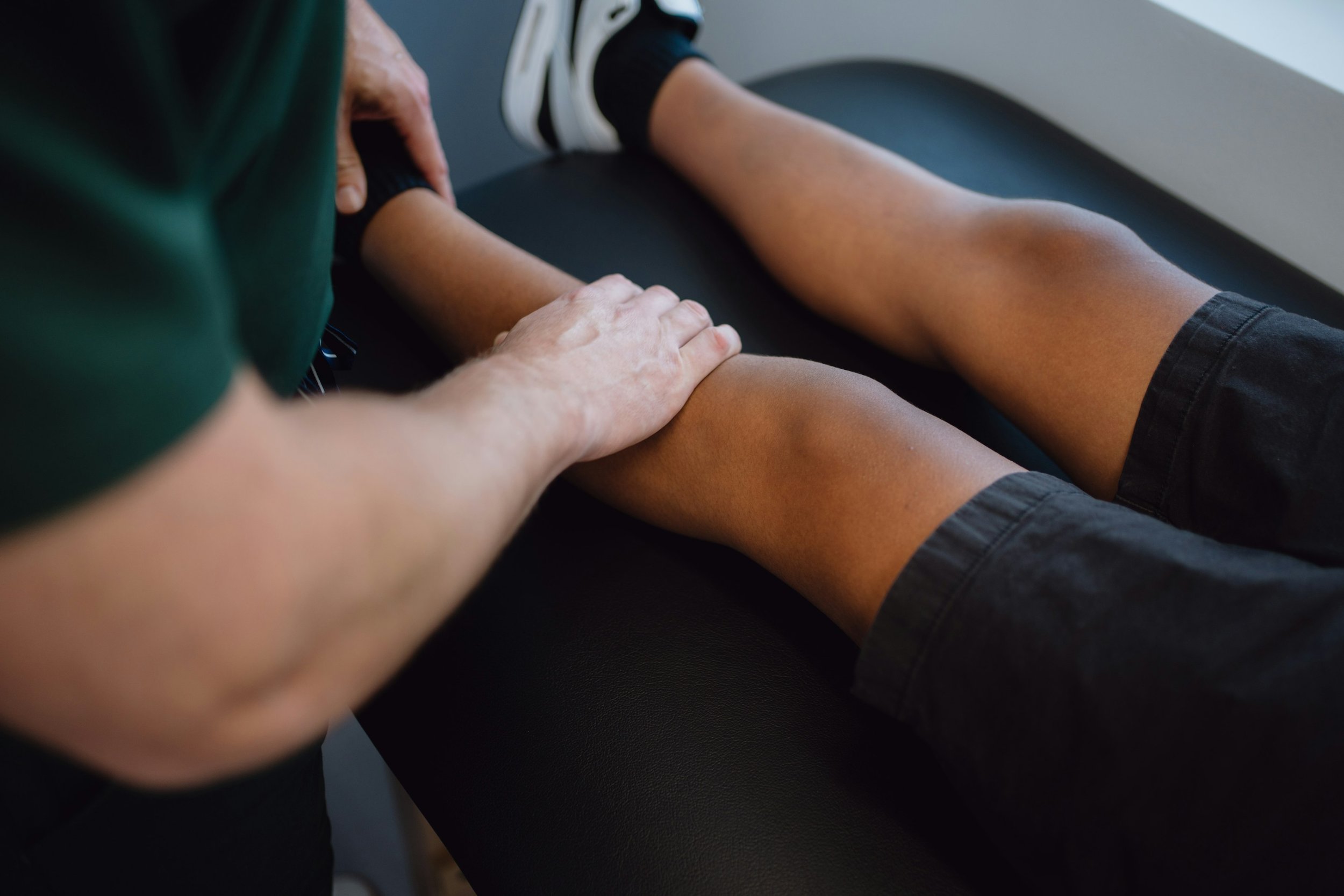
Achilles Tendon Injury Treatment In San Antonio
What is the Achilles Tendon?
The Achilles tendon is the strongest and largest tendon in the body, playing a critical role in walking, running, and jumping. When injured, it can cause significant pain and mobility issues. Dr. Rush specializes in treating Achilles tendon injuries, providing comprehensive care to patients and athletes in San Antonio.
The Achilles tendon connects the calf muscles to the heel bone. It allows you to push off the ground while walking or running and is essential for various movements. Due to its crucial function and constant use, especially in sports activities, it is susceptible to injuries. Dr. Rush's expertise in sports medicine ensures that both recreational and professional athletes receive the highest quality of care tailored to their specific needs.
Symptoms of Achilles tendon injuries
Recognizing the symptoms of Achilles tendon injuries is crucial for early diagnosis and effective treatment. These injuries can present with varying degrees of severity, and timely intervention can significantly improve outcomes. Here are some common symptoms to watch for:
Pain and Stiffness: Pain along the tendon or at the back of the heel, which worsens with activity.
Swelling and Tenderness: Swelling around the Achilles tendon, particularly after exercise.
Difficulty Walking or Standing on Tiptoe: Pain or weakness when pushing off the foot.
Audible Pop or Snap: A popping sound followed by sharp pain, indicating a possible rupture.
Common Achilles Tendon Injuries
-
Achilles Tendonitis
Achilles tendonitis is an overuse injury causing inflammation and degeneration of the tendon. It often results from repetitive stress and is common among athletes and active individuals.
-
Achilles Tendon Rupture
A rupture occurs when the Achilles tendon tears, either partially or completely. This severe injury typically happens during sudden, forceful movements and may require surgical intervention.
-
Achilles Tendon Tear
A tear can range from small micro-tears due to overuse to more significant tears from acute injuries. Both types can cause pain and functional limitations.
Treatment Options for Kneecap Dislocation and instability
Dr. Rush is a Sports Medicine Specialist with expertise in comprehensive treatments for kneecap dislocation and instability, aiming to restore function and alleviate discomfort. Each treatment plan is tailored to the individual needs of the patient, ensuring the best possible outcomes. Non-surgical approaches are often the first line of treatment for kneecap dislocation and instability. These methods focus on strengthening the knee and improving stability without the need for invasive procedures. Surgical options may be considered when non-surgical treatments are insufficient to address kneecap dislocation and instability. These procedures aim to correct underlying structural issues and provide long-term stability to the knee joint.
Surgical treatments for kneecap dislocation and instability
-
Reconstructive Surgery
Reconstructive surgery involves repairing damaged ligaments, tendons, or other soft tissues around the knee to restore stability. In some cases, it may also involve correcting anatomical abnormalities, such as realigning the kneecap or reshaping the femoral groove. This type of surgery is typically recommended for patients with recurrent dislocations or significant structural issues.
-
Arthroscopic Procedures
Arthroscopic surgery is a minimally invasive technique that uses small incisions and specialized instruments to visualize and treat problems within the knee joint. This approach is often used to remove loose fragments, repair minor tissue damage, and assess the overall condition of the knee. Arthroscopic procedures generally have shorter recovery times and less postoperative pain compared to traditional open surgeries.
FAQs about Kneecap Dislocation and Instability
-
If your kneecap dislocates, try to keep your leg as still as possible and seek immediate medical attention. Do not attempt to realign the kneecap yourself, as this can cause further damage. Apply ice to reduce swelling and elevate the leg while waiting for medical help. Contact us to schedule a consultation.
-
Diagnosis typically involves a physical examination, a review of the patient’s medical history, and imaging tests such as X-rays or MRI scans to assess the alignment and condition of the knee structures.
-
Surgery may be necessary when non-surgical treatments are not effective, or if there are significant structural issues or recurrent dislocations. Surgical options include reconstructive surgery to repair damaged ligaments and arthroscopic procedures to address minor tissue damage.
-
Kneecap instability can impact daily activities by causing pain, limiting mobility, and creating a fear of the knee giving way. This can affect tasks such as walking, climbing stairs, and participating in recreational activities.
-
Genetic factors can play a role in predisposition to kneecap instability. Conditions such as ligamentous laxity (loose ligaments) or certain anatomical features can be inherited and increase the likelihood of experiencing kneecap dislocations.
-
The choice between patellar tendon, hamstring tendon, and quadriceps tendon grafts depends on various factors, including the child's sport and knee history. Discuss with your surgeon to choose the best option.
-
It's generally advisable to avoid high-impact activities that put excessive strain on the knee, such as running, jumping, and contact sports. Instead, focus on low-impact exercises like swimming or cycling to maintain fitness without exacerbating knee instability.
-
Untreated kneecap instability can lead to chronic pain, frequent dislocations, and long-term damage to the knee joint, including cartilage wear and tear, which can result in osteoarthritis and reduced mobility.
-
Yes, targeted exercises that strengthen the quadriceps, hamstrings, and hip muscles can improve knee stability and help prevent kneecap instability. It is important to follow a regimen designed by a physical therapist to ensure the exercises are performed correctly and safely.

Meet Dr. Jeremy Rush
Dr. Jeremy K. Rush, MD, FAAP, is San Antonio's only orthopedic surgeon who is Dual-Fellowship Trained in pediatric orthopedic surgery and sports medicine. He specializes in arthroscopic surgery of the knee, shoulder, elbow, and ankle, as well as the treatment of fractures and other injuries in young athletes.


